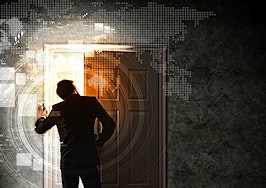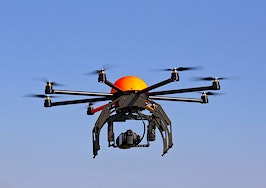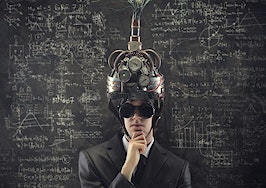The CurveScreen was set and calibrated. The wide sweeping arc of digital fabric covered one end of the room. When the projection appeared on it, the angles created an encompassing three-dimensional effect.
In front of the CurveScreen John Kestemeyer practiced his presentation. It was a simple run-through — he’d received the script a few days ago and had relentlessly rehearsed it.
This was just the final tech run. The medians — people who had been attracted to the presentation event via a variety of location and social signals — would begin arriving in an hour and a half.
John Kestemeyer’s presentation was a flawless and breathtaking description and promotion of a new piece of business hardware developed in the Korean print farms. As with all of John Kestemeyer’s shows, the technology was easy to use and inexpensive, and would dramatically improve the businesses of the medians who took the time to come to his show or talk about it in the Chatter.
The visual effect of John Kestemeyer on the stage with the CurveScreen operating at full tilt behind was impressive. The dimensional full field of view enabled by the screen was used to full effect. Pyrotechnics, close-ups of John Kestemeyer, moving live video of medians using the technology, integrated live testimonials. It was on par with the best theatrical releases.
The audio was just as intense. Fully dimensional, full-spectrum and focused on each seat. Music and voice perfectly matched dynamically.
The medians who carried devices that were biolog-chipped would have the audio tuned to their own personal hearing profile. For example, the aging millennials who would likely make up the majority of the medians for any John Kestemeyer event would likely have the volume up a bit and the equalization curve adjusted to give more high-pitched sounds.
The technology behind a John Kestemeyer event was the top of engineering in visual, biological, projection, acoustics and networking fields. It was possible mainly because the event houses in each major city were, for the most part, standardized.
The fee to use them was extremely reasonable, because the company that owned them retained some minor rights to the data feed of the presentations people gave. Each center was able to present the event simultaneously to maximize the national impact potential of the medians.
John Kestemeyer would get his script a few days in advance of an event and he’d be ready to present quickly, because he was damn good. And John Kestemeyer was in every city, at the same time along with his medians.
It was a no-brainer for John Kestemeyer and his medians to congregate at the centers and get the latest information.
As the first medians filtered into the hall, unrolling their screens to check the Chatter, Radka took the pipe to the 27th floor. She had a meeting scheduled to deliver her information to her bosses from Avalónëa Data Cloud Inc.
The pipe emerged in her presentation suite. She and her managers didn’t use the presentation gear, of course. They were decision-makers, not medians.
She would be expected to be able to competently discuss and describe her project. She had PhysDocs on hand for her audience. Her bosses were expected to challenge her findings, ask probing questions and be genuinely involved.
The primary technology of the room didn’t revolve around sensory perception or enforcing a broadcast delivery format. Instead, the technology deployed in this room was designed to support decision-making and active engagement in the topic.
The participants would be evaluated as a result of the signals given out in their biofeedback systems. Radka would be evaluated in relation to her courage in pulling the strongest biosignals correlated to engagement and alertness. As a team, they would be evaluated on their collective biosignals.
The first of her managers arrived up the pipe with the faint cheering of the John Kestemeyer show many floors below.
Gahlord Dewald is the president and janitor of Thoughtfaucet, a strategic creative services company in Burlington, Vt.








